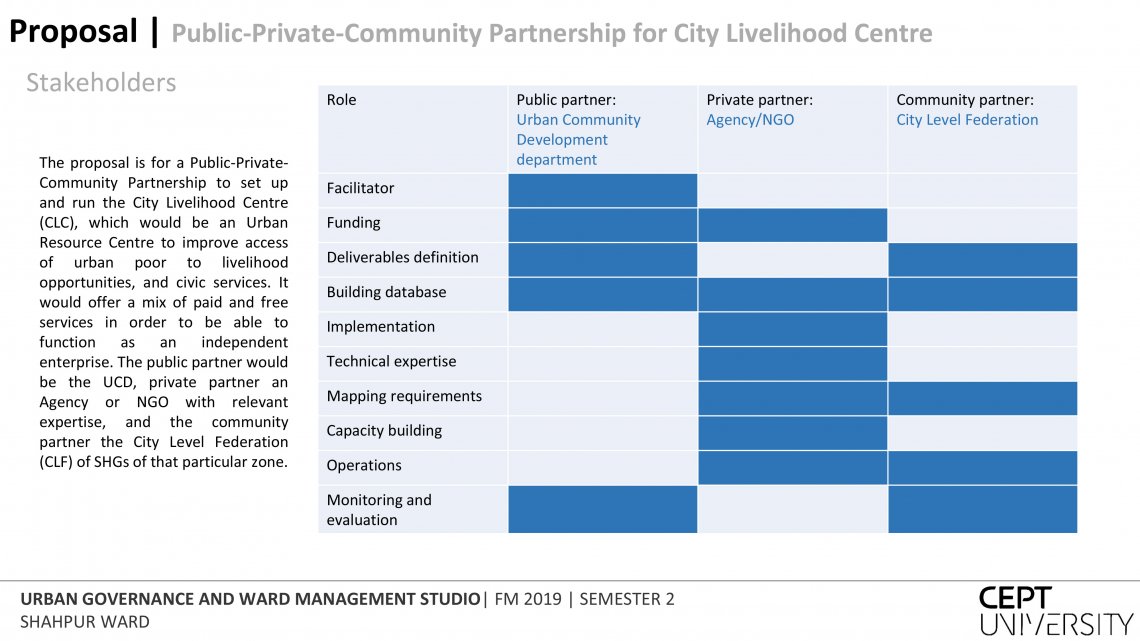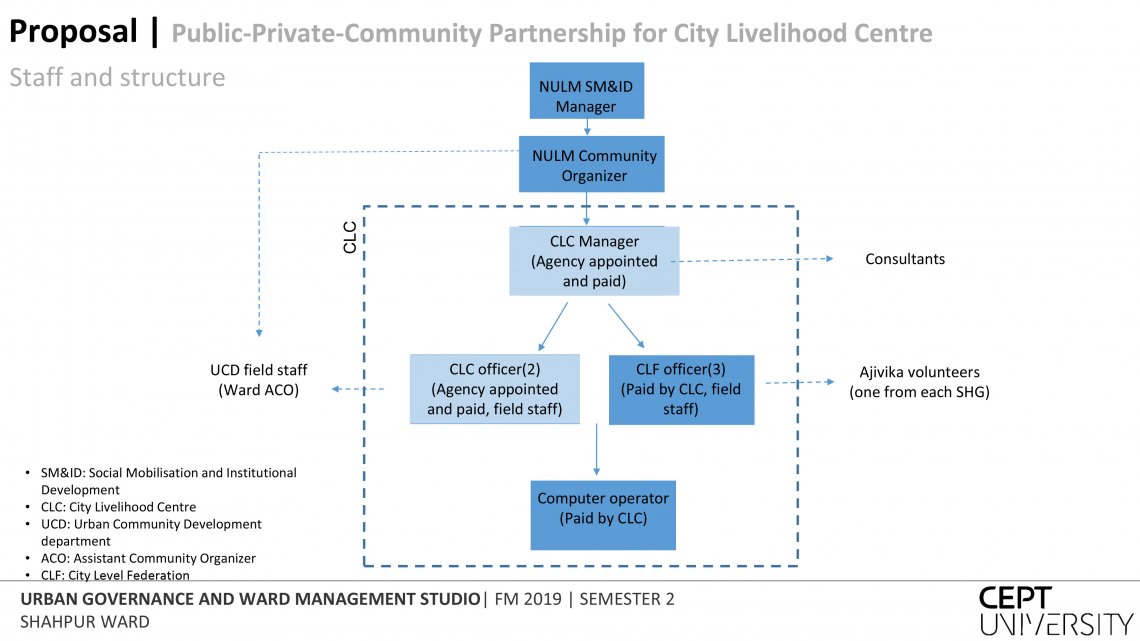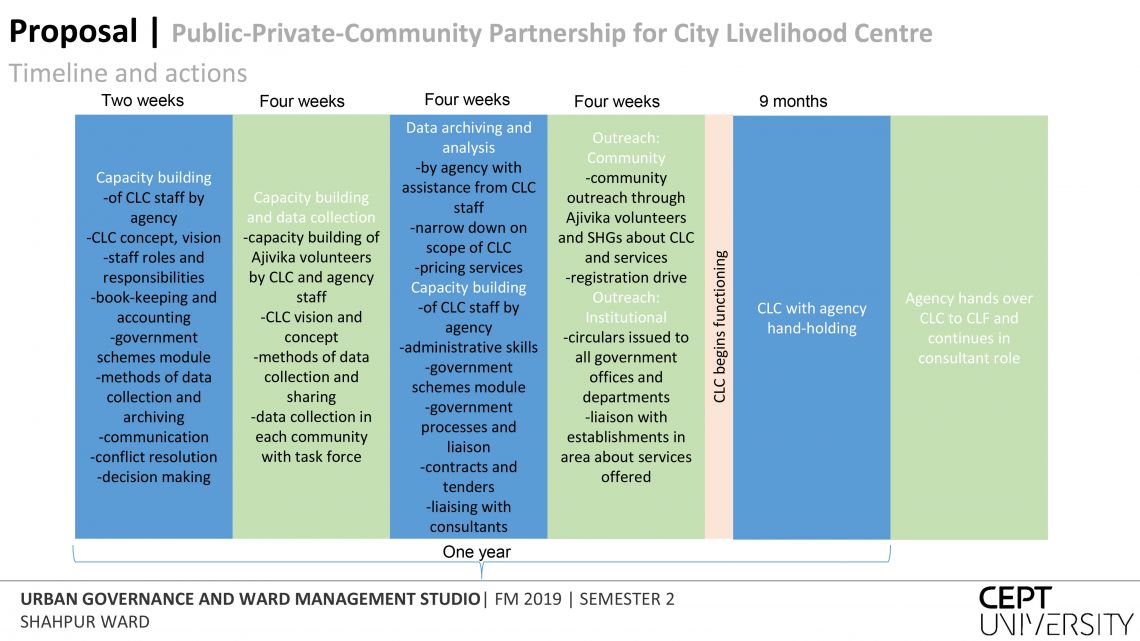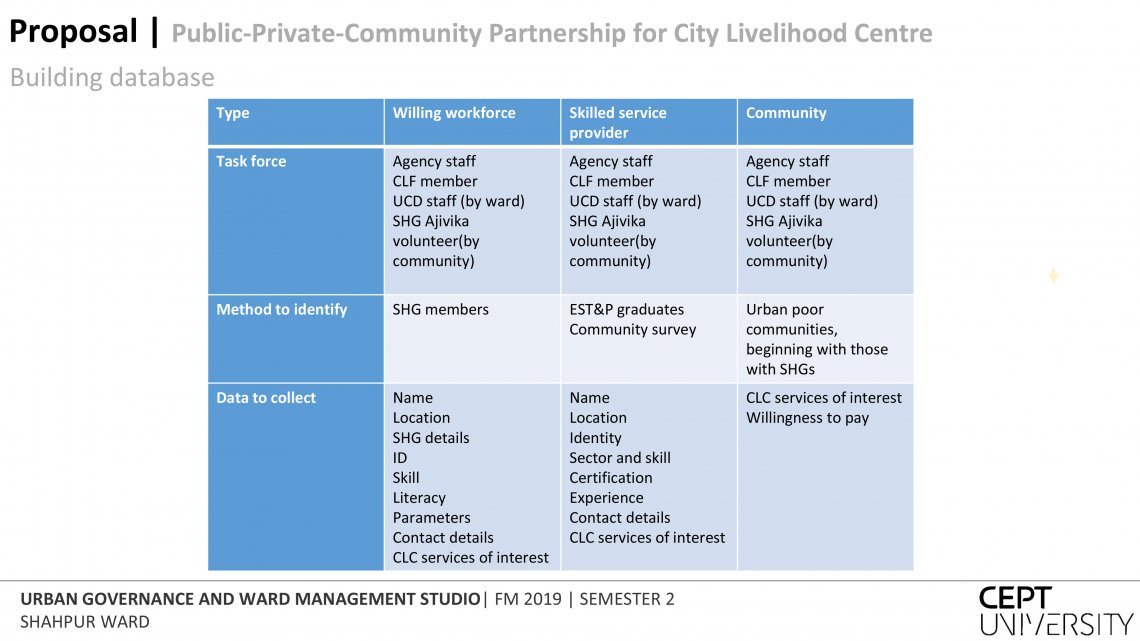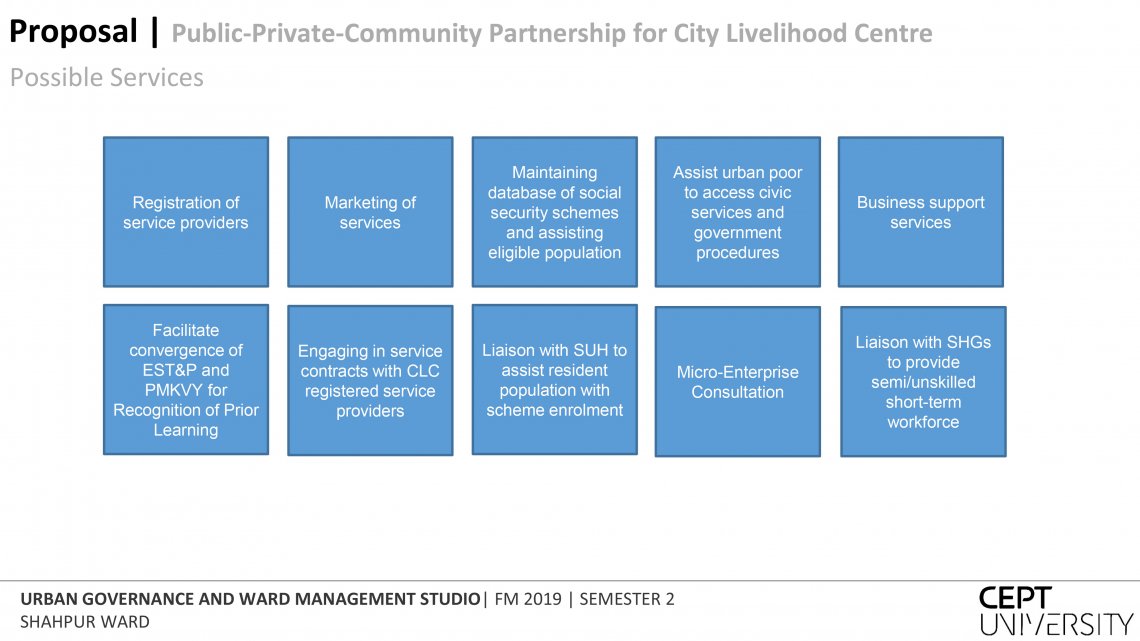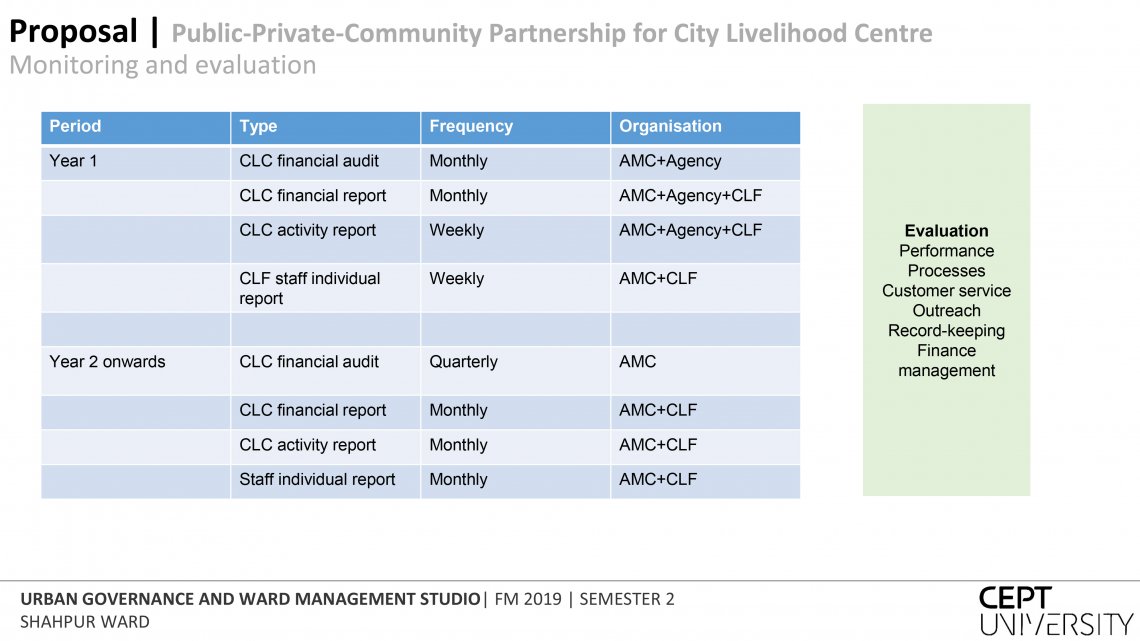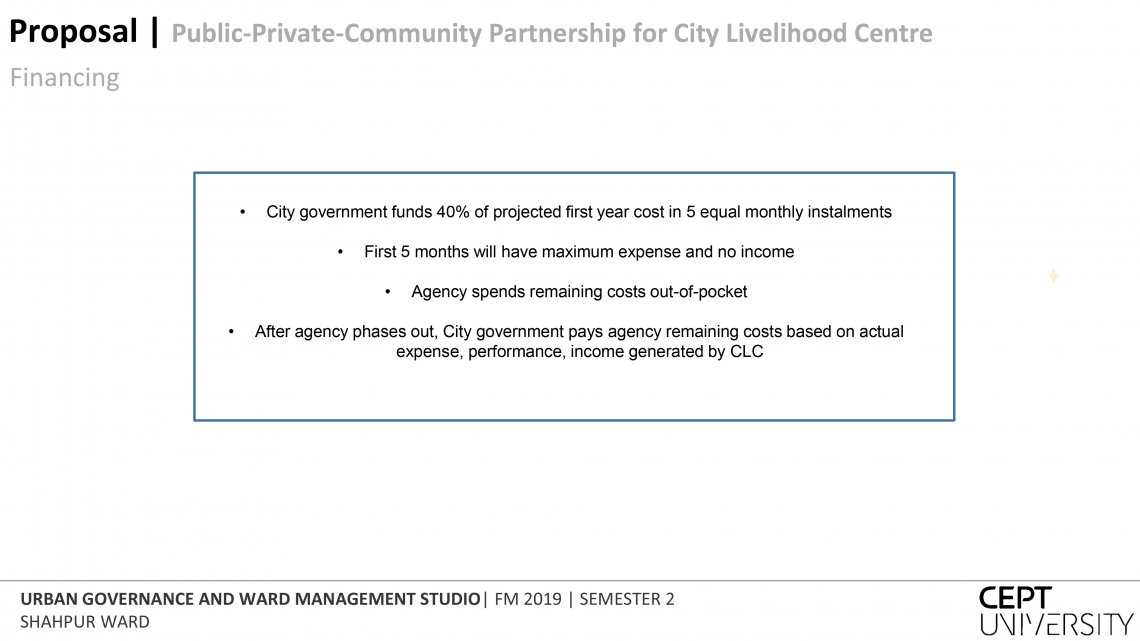Your browser is out-of-date!
For a richer surfing experience on our website, please update your browser. Update my browser now!
For a richer surfing experience on our website, please update your browser. Update my browser now!
The National Urban Livelihood Mission addresses urban poverty alleviation by aiming to reduce occupational vulnerability, and strengthening community-building and representation of the urban poor. It works through 6 components, of which Social Mobilisation and Institution Development has been looked at in this study. This component deals with the formation and federation of Self-Help Groups (Sakhi Mandals), which are thrift and credit groups formed by a group of 10 women; and establishing City Livelihood Centres(CLC) which are meant to be business service centres for the urban poor. In Ahmedabad, NULM is executed by the Urban Community Development(UCD) department.
